A Star on the Face of the Sun
09/12/2021. After videoing a pair of departing active regions, I looked around for anything else of particular interest before packing up to come home. In the same general longitude as the ARs but several degrees of latitude away was a single, isolated flare. Tiny and intense, it looked for all the world like a star against the face of the Sun. It even shimmered like a star.
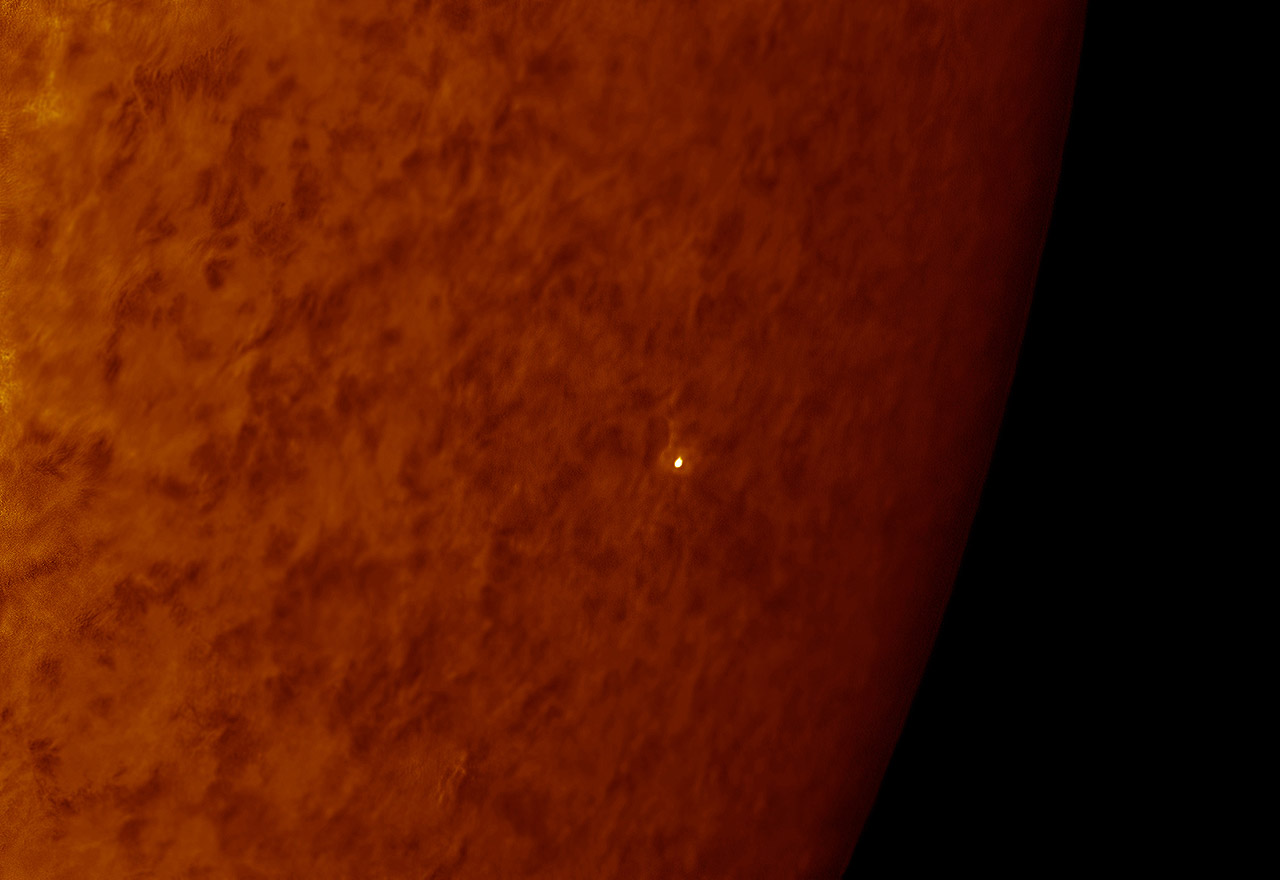
Best 125 of 500
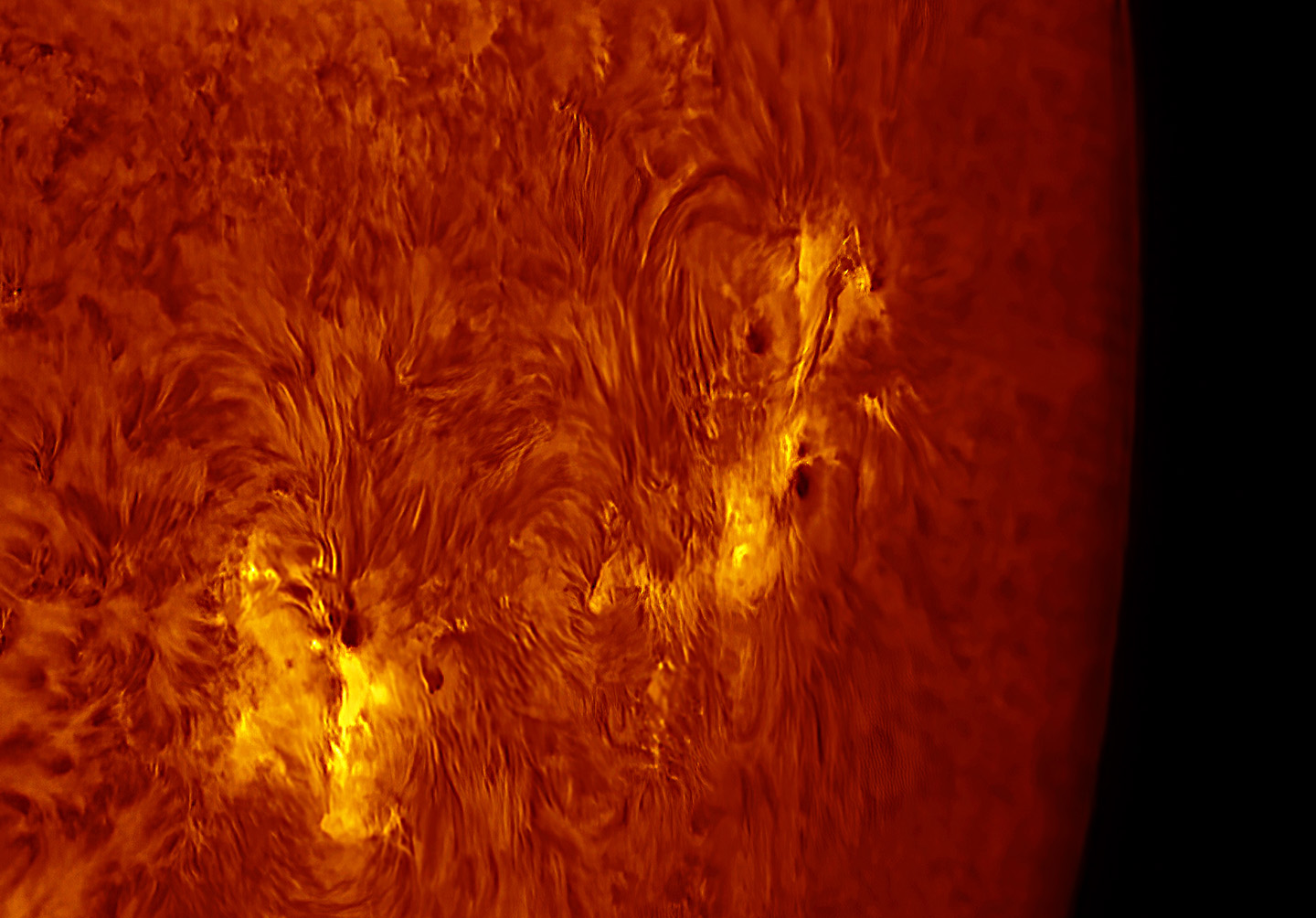
Best 125 of 1,000
Today's seeing really was excellent, and I used it to keep experimenting with Firecapture, USB rates, gammas, and flatfields. Updates from today's hour in the Sun are interlined in related notes on a previous page; I'll document everything as a workflow when I am satisfied.
Naturally, now that I've adopted an ASI178MM as my solar imager, today I read about some weird pattern noise that plagues some users, as if a weak Bayer pattern were imposed on the monochrome chip. There are supposedly effective treatments if it's a problem, and many observers do not see it at all. It's always something, and usually it's lots of things.
09/15/2021. I took a little over 25GB of data of a hazy and largely featureless Sun today to explore the ASI178MM and Firecapture. Works great, images look good (considering the haze and low-interest subject), flatfielding works with very large ROIs (I tried up to 2048x1600), speeds are excellent especially at merely mortal ROIs. 1600x1200 works fine. It will be worth remembering that a 1,000 frame AVI with that frame size occupies 1.8GB of data and takes less than 10 seconds to capture. Alas, all is not well.
Fixed Pattern Noise is definitely a thing with this camera. A decent set of images of prominences is seriously compromised by the infamous grid pattern. I'm working on solutions both crude and sophisticated. One prominence image is essentially ruined by FPN, but a couple of solar surface clips are free of FPN altogether. Why? Listen: we are over-sampling with this camera and this telescope, so there is room to do a Gaussian blur pass (~4 pixels) to remove the pattern followed by a USM pass at a slightly or substantially different scale and still get good results. But it pains me to intentionally degrade what ought to be good data. That works but it is seriously un-elegant.
Time out to mow the lawn. All right! Bingo. I am pretty sure that I have a complete solution. But I want to see more images taken under different conditions before I go public with it. In the meantime, let's enjoy the ASI178MM and get some experience with its pros and con.
9/19/2021. 3,000 frames offered no advantage (today) over 1,000. So save the storage. If you're going to average 200 or 300 frames, gain can be absurd in the interests of short exposures. I still don't know when FPN rears its head and when it does not, but I am more convinced than ever that I know what to do when it does. Now let's talk about wavelets.
I've been getting back up to speed with Registax 6 and its wavelets routines, mostly by reusing wavelet parms I developed back in 2016. These two images began as 1,000-frame captures using a 1,600x1,200 pixel ROI and flatfields in Firecapture, stacked and drizzled 1.5x in AS!3, sharpened using wavelets in Registax, polished in Photoshop. No FPN in these. As convinced as I am that low gain ought to better than high, that shorter exposures ought to be better than longer ones, I'm just not seeing it with thousand-frame clips. So far, it just doesn't seem to matter, so use what feels right on any given day: try short exposures with high gain in fast seeing or longer exposures with lower gain in slow seeing. Whatver works.
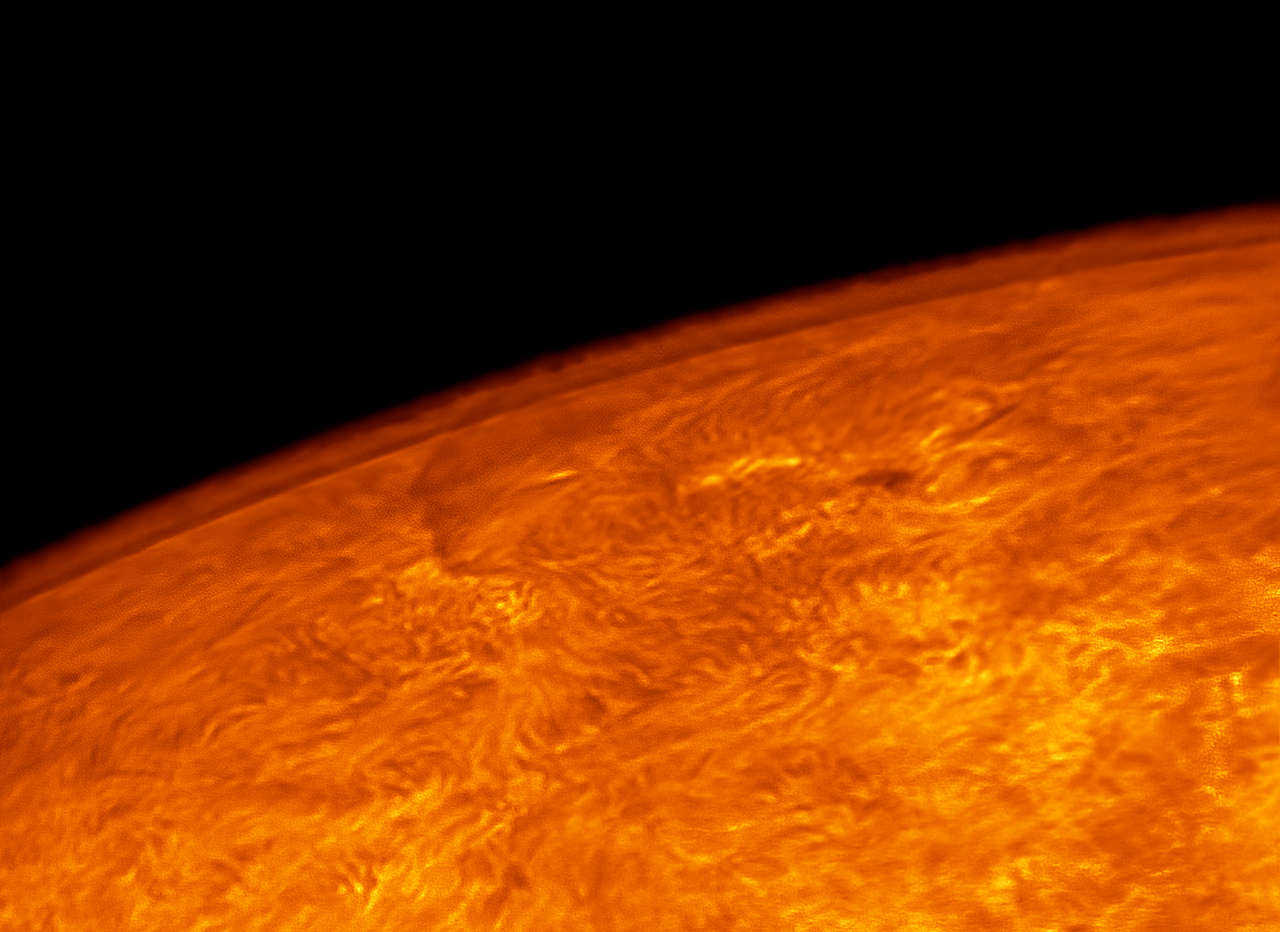
Returning spot in a seething active region
(see Staring at the Sun, page 89)
.
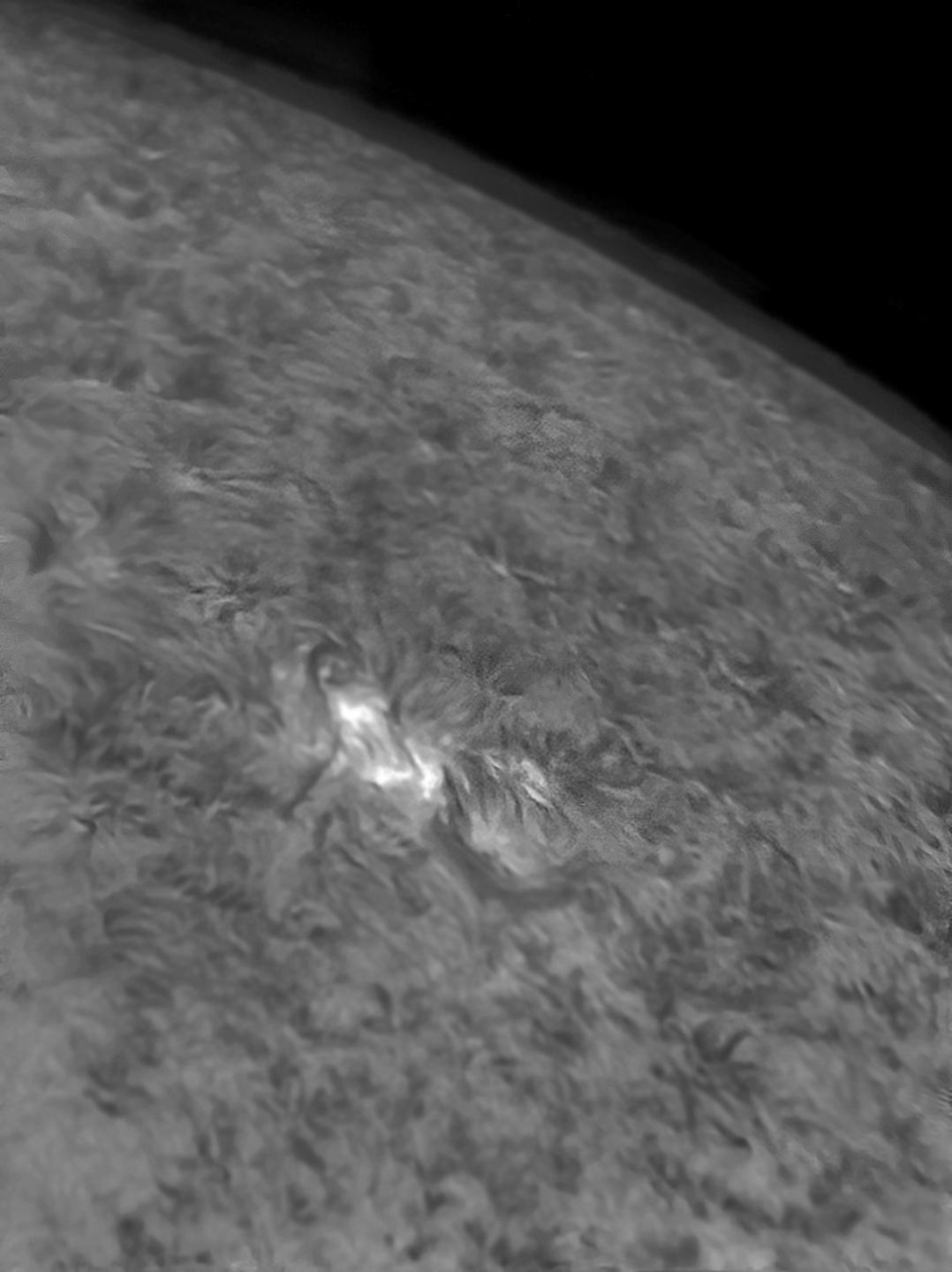
Isolated AR, just for drill,
demonstrating that I have a ways to
go before reliably getting the best this
rig can offer.
Two more from earlier this month re-processed using Registax. First, the two frame panorama seen in color on page 91 and then the same two active regions shoe-horned onto the ASI120MM one day later processed with Registax and wavelets and the ImPPG and L-R deconvolution. Look back to page 91 compare these efforts to previous sharpening attempts.
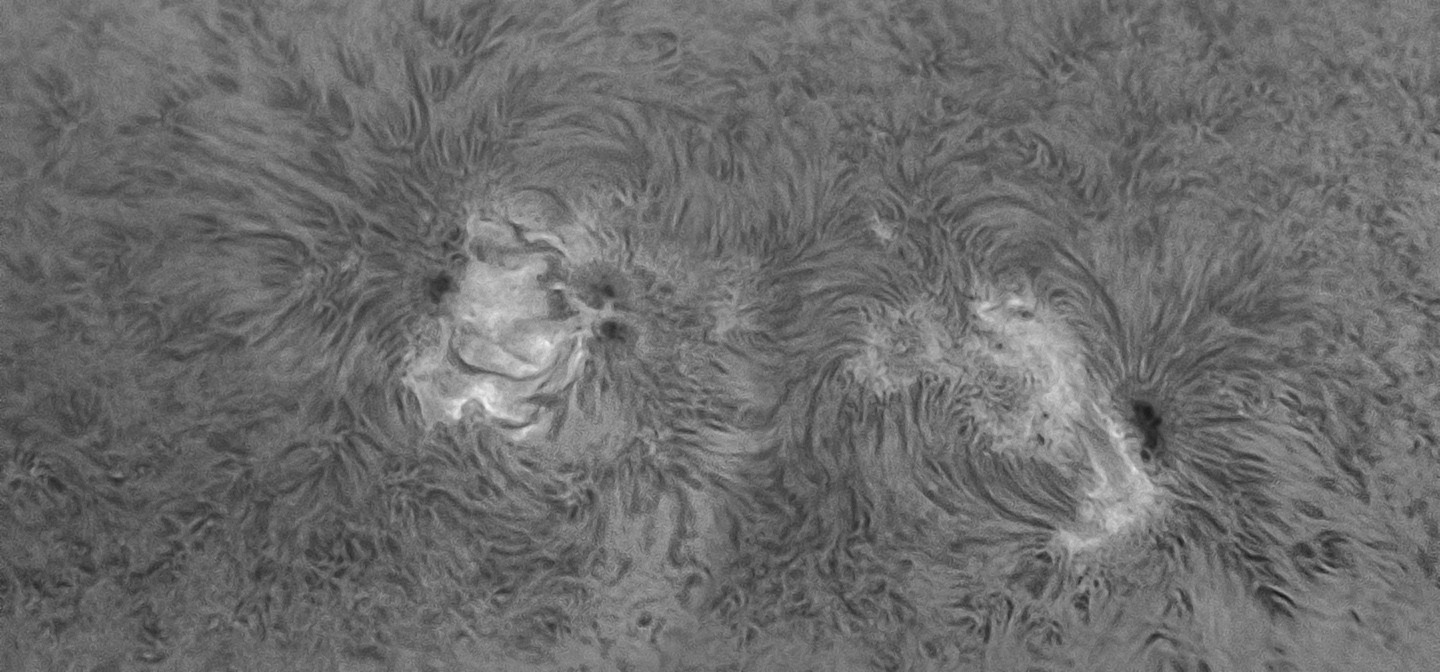
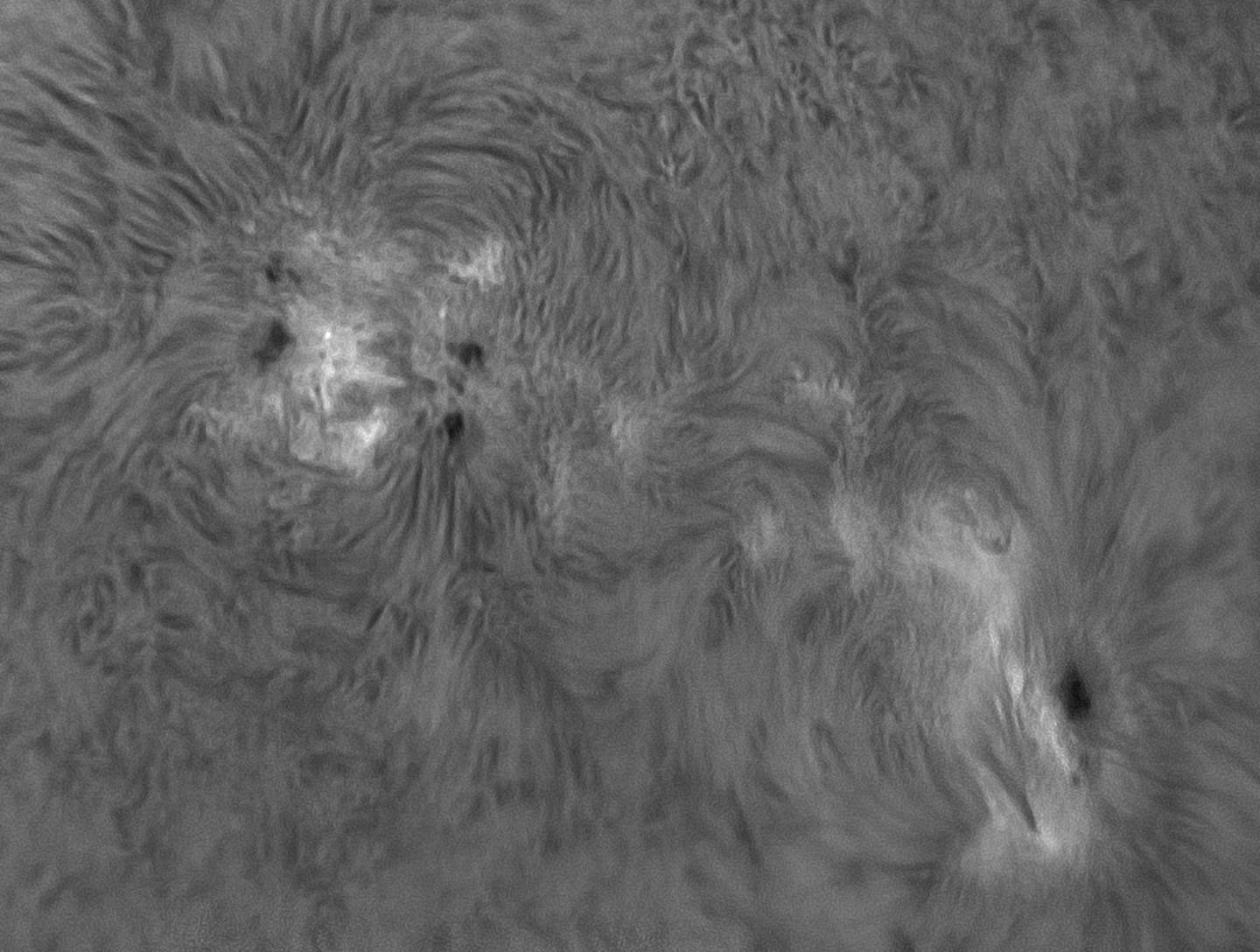
I have also discovered ImPPG. It's going to take some practice to keep both the exquisite low-contrast details (lower right!) as well as the sharp highlights (left), without klutzing up the midtones, fattening some linear features, and generally making a mess. It looks like some flavor of ringing (and yes I had that box checked that's supposed to minimize ringing), but it looks as if I overcooked something. ImPPG is the closest thing yet to a convenient, interactive one-stop shop for post. I'll show this result anyway, but I am 100% certain better is coming. I only downloaded the package an hour ago, and there are a lot of things to get worked out. Stay tuned.
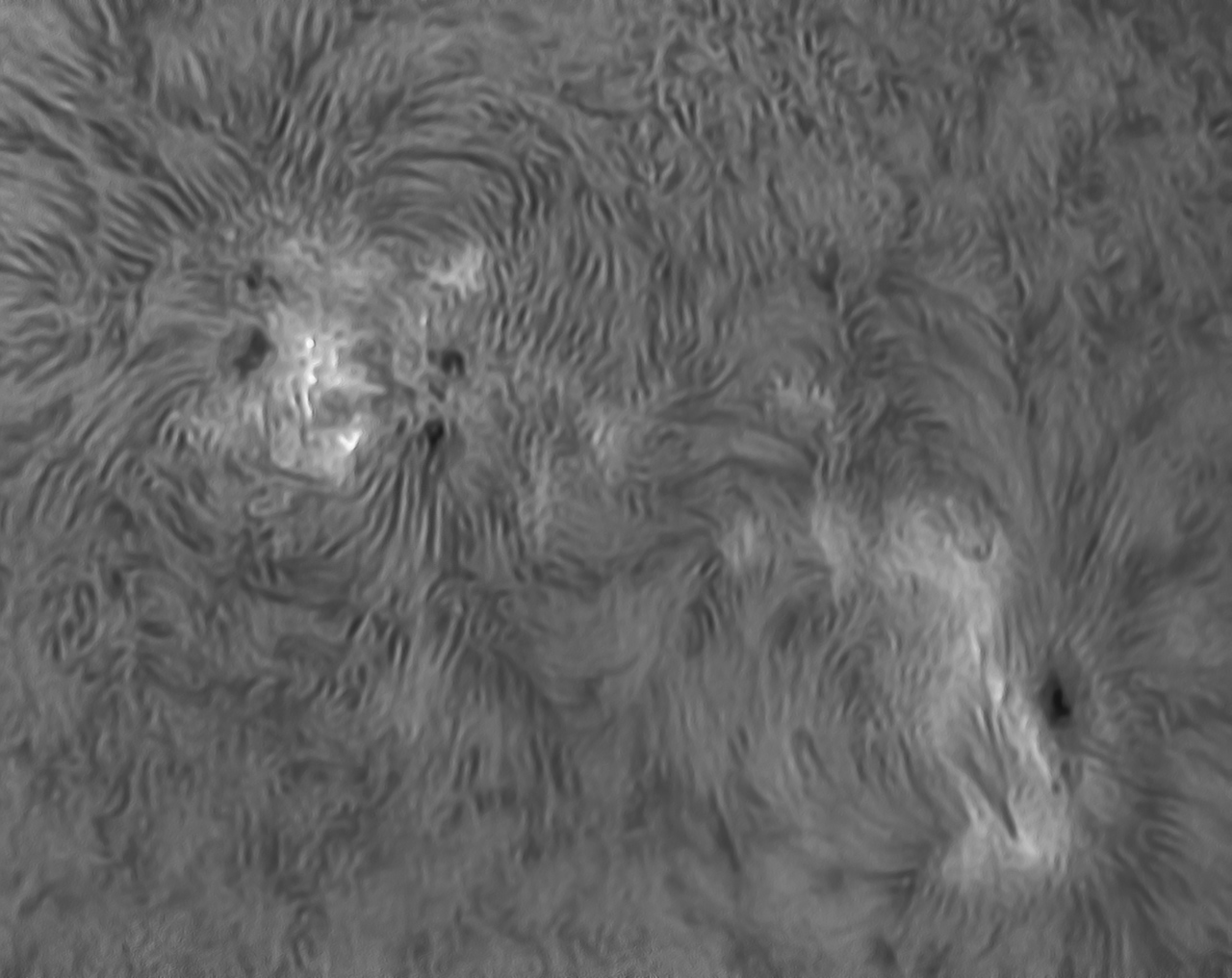
9/23/2021. Crystal clear, beautiful blue skies today. The nearest Clear Sky Clock said the seeing would be poor. It was. Lucky imaging doesn't solve everything. A ltitle breeze, a lot of air-mass, and poor seeing combined to make a mess of things this morning. The forecast for tomorrow is for unusually good conditions.
This evening I videoed a moonrise with the TMB92SS and the R6. Note that as tempting as using the Log setting for 4k video is, it causes a world of codec issues. I finally found a library of codecs that lets me watch my take, but forget about loading it into Premiere Elements or Photoshop or just about anything else with output capabilities. Looks good, but stick to 8-bit video until you really need the extra bits and have the right tools. The Alt-Az mount worked fine, but would be better on a Linhof than on its extruded aluminum econopod. O joy! Lathe work to follow!
9/24/2021. Even crystaller clear skies today, and, as forecast, excellent seeing. Listen, you know how people get those lovely, noisefree, razor sharp solar images? They call this kind of seeing "fair," and they take a ton of good data:
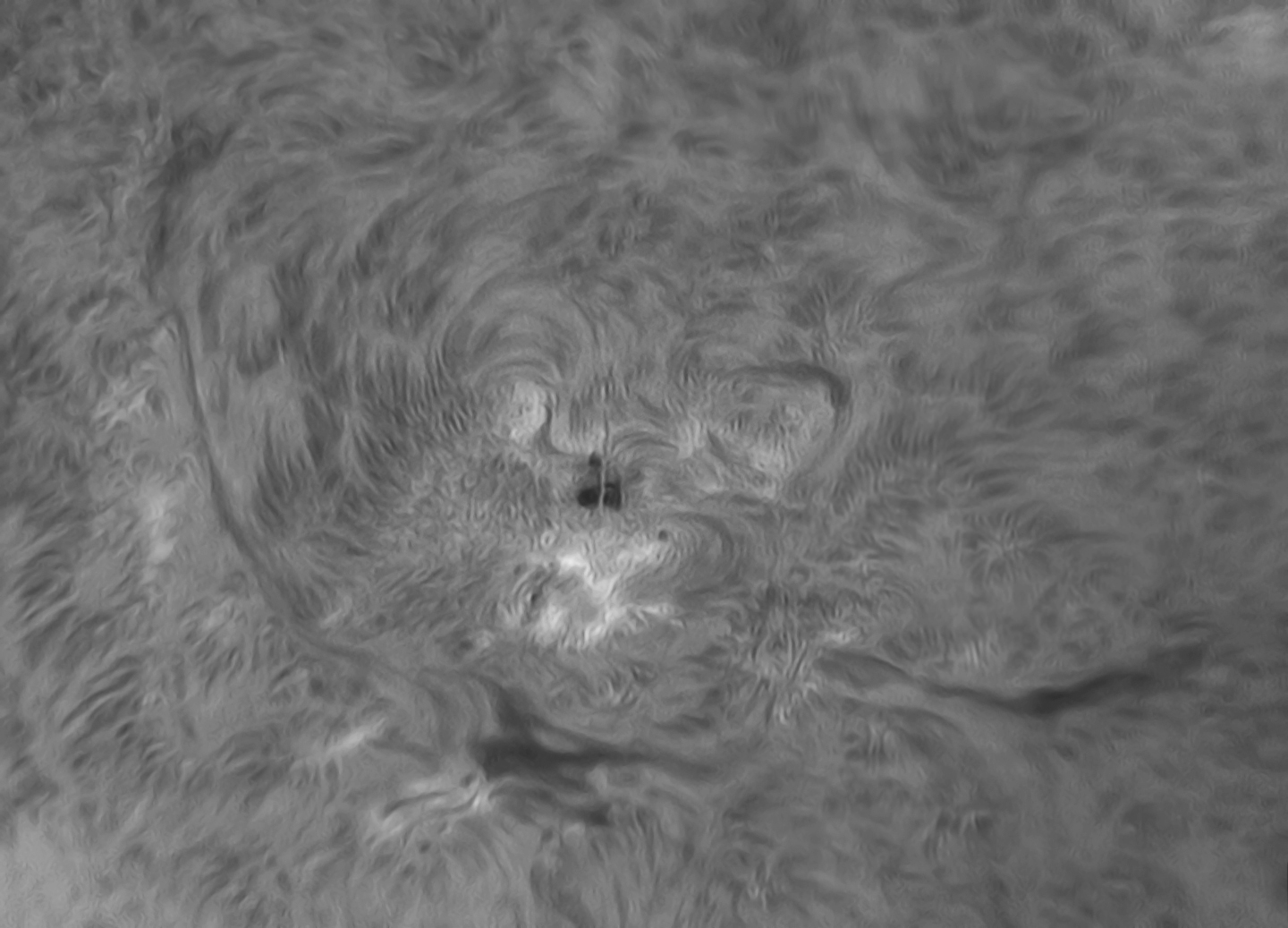
Best 500 of 2,000 frames
Firecapture, flat, AS!3, ImPPG
Click the pic!
That's using the ASI178MM with a ROI of 2000x1600 pixels (about 60 fps) on a dead calm day under what counts for me as really good skies. It comes to a little over 6GB of data for one photo ("a little over," the rounding error, is twice the size of my first hard drive, a 105MB Toshiba). Make it big. I used the emboss trick -- credit to follow -- for sharpness followed by overlaying a moderately defocused version blended with soft light for tones. We'll get there.
(Promised credit: Simon Tang, in this video from Woodland Hills.)
Also: throw light at the solar images. Back to back and side by side comparisons make it clear that the better images today were captured with histograms closer to the center and center right than is my usual custom. Noise matters even in deep stacks. If you're not trying to hold details in a flare, let the light shine in.
By and by, I'll be confident taking a few deep stacks rather than a lot of thousand frame "snapshots." That's hard on storage and hard on patience.
I wonder if I am tilting the sensor too aggressively with the 178's physically larger chip (note the loss of definition in the upper right). I should back that off and see if I can eliminate Newton's rings with less tilting. The scheme I've been using for a decade is also putting the sensor pretty far off-axis behind the small blocking filter. It's OK with a small chip or a small ROI, but you can tell something is off by rotating the camera: the center of rotation is nowhere near the center of the field of view and there are obvious differences in the evenness with which the field is illuminated. Flats are wonderful things.